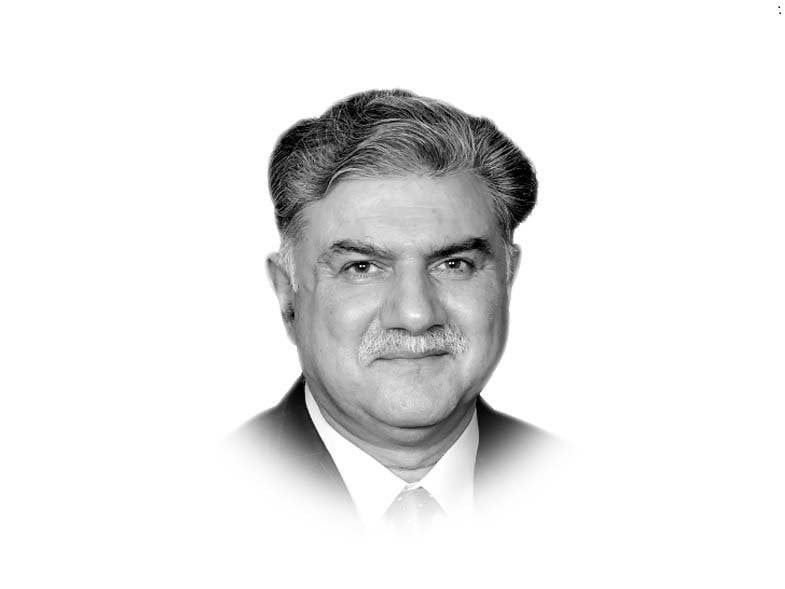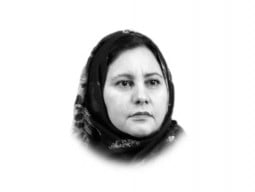
For a very long time, the Establishment (civil and military and mostly non-Baloch) has looked at Balochistan as a monolith. Balochistan is not a social, sociological, religious and political monolith, and hence needs different and nuanced policy formulation, calibration and implementation.
Sociologically, the northern Balochistan including Quetta and surrounding areas including Kuchlak, Ziarat, Gulistan, Chaman, Lorelai, Zhob, Sambaza up to Tank is a Pashtun belt inhabited by Kakar, Tareen, Suleman Khel, Bareech, Sherani, Ahmadzai, Durrani and Niazi Pashtun tribes, etc. It hosted the largest Afghan Refugee Camps at Saranan, Surkhab, Karez Posti, etc. North Balochistan lies opposite the Kandahar Province of Afghanistan, home to Taliban Movement. This area links Pakistan and Afghanistan in trade, tribal, religious and social linkages through Spin Boldak.
Pashtun constitute around 40% of Balochistan's population. They live in dense and thriving urban areas as well as the rural heartland, cultivating irrigated lands and tending fruit orchards. They control Balochistan's mining through management in Quetta and workforce, as most mine labour is from Swat in KP.
Baloch comprise around 50% of Balochistan's population, whereas around 40% of entire Baloch population lives in Sindh. Major Baloch tribes are Rind, Lashar, Marri, Mengal, Jamot, Bugti, Domki, Dashti, Magsi, Khosa, Umrani, Gichki, Buledi, Notazai, Sanjrani, Meerwani, Langove, Zardari, Zahorzai, etc. Major segments of almost all Baloch tribes living outside Balochistan are well integrated locally through agriculture and businesses. Baloch tribes are smaller compared to the Pashtun tribes. Baloch are increasingly well represented in the civil and military bureaucracy.
The Makran coastal belt is distinct. Its Buledi and Sheedi tribes trade in fishing, and greatly benefit from opportunities afforded by Pakistan Navy (PN)'s presence. PN's Coastal Command is keenly involved in the uplift of Makran coastal belt from Gwatar Bay to Karachi, whether it is disaster relief, or provision of health, education and infrastructure development. Sheedis of Makran do not actively subscribe to the parochial Baloch ethno-nationalism. They have sizeable Zikri population, practising their own version of Islam.
Western Balochistan along the Pak-Afghan-Iran border is mostly rife with smuggling of Irani petrochemicals and other goods. Reko Dig, the yet to be optimally explored gold mines, and the Saindak copper gold mines (almost 180 km apart) lie in Chaghi District, north of Taftan on the RCD Highway. Girdi Jangal along the RCD Highway in Taftan area has one of the biggest smugglers' camps with everything from weapons, ammunition to cars and jeeps available. It is exclusively a Pashtun-Afghan undertaking at the fringe of Baloch lands, bordering Afghanistan and Iran.
This RCD Highway – Panjpai-Noshki-Padaq-Dalbandin-Nokkundi-Taftan – is frequented by Zaireen (pilgrims) mostly from the Shia areas of Pakistan especially urban Sindh, rural KP and Punjab, for Ziaraat (pilgrimage) in Iran. Human smugglers also operate along this axis; therefore, this area has its own dynamics and pro-Pakistan/pro status-quo leanings. Recent showdown with Iran adds to its complexity. These smugglers also operate in the sea from Makran Coast to the Gulf of Oman and the GCC countries. As you travel south of Turbat through rocky Central Makran Range, the demography and landscape changes to cleaner, civilised and orderly rural settlements with feelable Iranian ethno-cultural influence.
The central heartland of Kharan, Awaran, Sarawan, Jhalawan, Sui and urban centers like Qalat, Khuzdar, Mastung, Nag, Besima, Panjgur, Turbat, etc are under insurgency per se. This is sparsely populated, less educated, backward area under the firm grip of Sardars, who enrich themselves from the Sui royalties for example, without passing the benefits to their tribes.
One remembers a reconnaissance trip here in 2002-03, during the Musharraf era. At one check post, inspired by the massive development that the Musharraf Government was undertaking under the 'Balochistan Package', the locals expressed feelings, for the first time, of being Pakistani, as even bread came from Iran. Gwadar would have generator-based electricity supply limited up to 10 PM. Now this bustling metropolis has a deep seaport, 24-hour uninterrupted electricity, industrial zone and an international airport. The city boosts five-star hotels, thanks to Pakistan's laser sharp focus and CPEC.
Even before CPEC, this area was inter-connected through world class road infrastructure. Today, education, health, connectivity and communications are way ahead of what these used to be, twenty years ago. Now as part of CPEC's Western route, the emphasis is on socio-economic development. Most militants' attacks occur in this central zone, targeting troops working on developmental projects. Sympathetic detonation elsewhere is to magnify the impact.
Demographically, this belt comprises rural elite – the Sardars – and a vast pool of 'relatively' educated, but dissatisfied and exploited youth bulge, that has been manipulated through false hopes of this area becoming a new Singapore incorporating the Makran Coastal Belt and the mineral riches, if the 'Punjabi Establishment' is overthrown. Socio-psychologically the anger directed at the state for 'perceived deprivation' is also a reaction at being unable to throw the yoke of Sardari enslavement, lack of opportunity, and their own harsh natural environment compared to other social groups. Education and exposure have injected a sense of urgency to catch up, and inability to do so under the endemically meagre provincial resources leads the Federal Government to boost provincial coffers, besides doling out non-audited financial favours to Sardars.
So, geographically, demographically and socially, Balochistan is not a monolith, and will never be so. And that necessitates nuanced policy formulation and implementation, as one size does not fit all. Sparsely populated, desolate and feudal, central Balochistan with distant settlements is in the 'development' sights, but economy, geography and demography impede quicker pace of uplift. In statistical terms, the per capita development expense in central Balochistan is much higher than the rest of the province and the country. And the moneys expended are also, in per capita terms, higher.
Following on from above, one fails to understand the political bogey of naraz (in angst) Baloch, as to why are they naraz? Their wily feudal lords-cum-Sardars-cum-politicians play up and inflame the 'perceived deprivation', manipulating Baloch public to ignore ground realities. 'Ferrari camps', under their control, offer refuge and square meals to dirt-poor, gullible tribesmen in their isolated universe of bigotry, ignorance and cultural enslavement.
Clearing myths about Balochistan's accession to Pakistan next week.













COMMENTS
Comments are moderated and generally will be posted if they are on-topic and not abusive.
For more information, please see our Comments FAQ